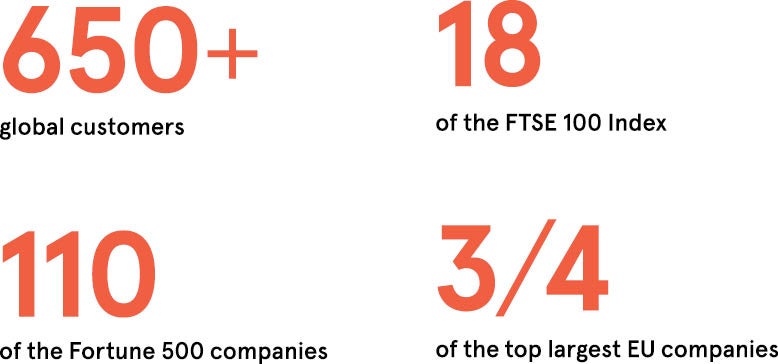With Parliament yet to approve a Brexit deal, uncertainty continues to plague the UK and European Union labour markets. Businesses are being forced to prepare simultaneously for wildly different scenarios.
Though this is an extreme example, the truth is that disruption in the labour market has become the new norm. While Brexit is currently in the spotlight, in due course attention will turn to the next challenge. Under these conditions, businesses know that the future is binary: either you are a disruptor or you are being disrupted. To be a disruptor, you need talented people and for that you need talent acquisition teams agile enough to prosper in turmoil.
“The reality is that agility is a capability, one that enables you to harness the power of disruption and convert it into opportunity rather than a crisis,” explains Dimitri Boylan, chief executive of Avature, a leader in enterprise software as a service for talent acquisition and talent management. “Agility is already a core capability of tech-enabled businesses from Amazon to Uber that have successfully disrupted their markets.”
Like most organisations, the chances are that your business is going through some form of digital transformation. As technology becomes more integral to how you compete in the market, you are slowly converting into a tech company. This transition has important implications for recruiting teams who will soon find themselves in a new, even more competitive market for talent.
Recruitment and retention of high-impact transformational talent is probably the easiest place for human resources to orchestrate its own transformation, but to succeed they will have to embrace agility and face the chaos and disruption in the labour markets differently.
Technology companies have taken recruiting very seriously for a long time, but many did so by taking recruiting out of HR altogether. And while that worked, it prevented leading-edge recruiting practices from influencing talent management and prevented companies from addressing talent issues in a holistic way.
If your technology is a digital straitjacket, then you don’t have a good shot at doing anything agile
So how does HR develop a total talent management philosophy that embraces agile practices and transforms itself into a strategic weapon for the organisation?
The first hurdle to overcome is your organisation’s psychology; there can’t be resistance to doing things differently. The quickest way to kill an idea is to demand return-on-investment analysis before it has been implemented. But this is a common occurrence when leadership is presented with an innovative and untested approach; they instinctively put the brakes on.
“To embrace agile in a company, the organisation has to actively promote the practice and be open to the trial-error-learn-adjust approach. If you demand perfection, nobody will make a move. It’s a trial-and-error process with the data from failure used to optimise future actions,” says Mr Boylan.
You won’t always be able to guarantee a positive outcome, but you must be prepared to do things quickly and differently. As with marketing and sales, there is a bonus for being the one that gets there first. Operating ahead of the curve is a strategic advantage in recruiting.

As well as adopting the right mindset, the most agile companies give their people time to think and experiment. If you don’t create an organisation that can innovate, you cannot expect to achieve agility; they go hand in hand.
Technology is the key enabler of agility. If you don’t have a platform that allows you to execute all of the different programs you are working on in a reasonable amount of time, and at a relatively low cost, they will fail. But many recruiting teams are prevented from selecting fit-for-purpose technology and are forced to operate on core HR technology that doesn’t meet their complex needs.
“If your technology is a digital straitjacket, then you don’t have a good shot at doing anything agile. Technology has to serve a new purpose in the organisation; it’s a weapon, and it needs to be wielded by HR and marketing departments to achieve their goals,” says Mr Boylan.
Typically, HR software reflects its accounting software origins and deals with people as if they were numerical assets in a payroll ledger rather than human beings who need to be engaged with and motivated to join or stay at the company. Agile recruiting teams prefer to have candidate-
centric platforms at their fingertips that empower them to approach hiring in a new, meaningful way.
Finally, it’s important to realise that agility is not one dimensional. “Our most progressive customers fully understand their marketing department’s obsession with segmentation and personalisation. They would never take a one-size-fits-all approach and neither should recruitment. By focusing on creating a market-by-
market strategy that takes into account individual market nuances, recruitment can provide a true competitive advantage,” says Mr Boylan.
There’s no doubt that these are complicated organisational challenges that require attention and resources. But victory in a turbulent labour market belongs to agile recruiting teams.
“In the face of institutional resistance, taking a programmatic approach to innovation, where the company generates a variety of programmes in different markets and at different scales to find what works, can be a great way to calm the butterflies that leadership might have. Change doesn’t have to be huge and transformational. When it is introduced on a small, but continuous scale, the end result tends to have a bigger impact,” says Mr Boylan.
“If you can’t deploy agile recruitment methods, there’s no way you can compete for top talent. Your inability to attract the illusive in-demand workforce will put the brakes on any fundamental company-wide digital transformation that you have in mind. Meanwhile you will lose key talent. Good recruiters will move on to companies where they can practise their craft freely and the forward-thinking managers will settle into their disrupter of choice.”
To find out more about how Avature can help your business please visit www.avature.net






